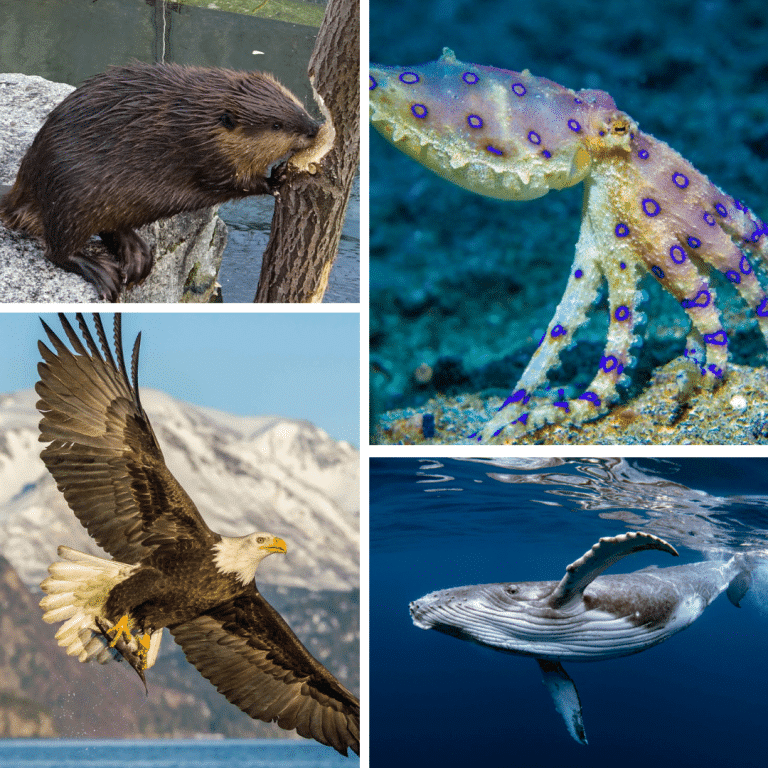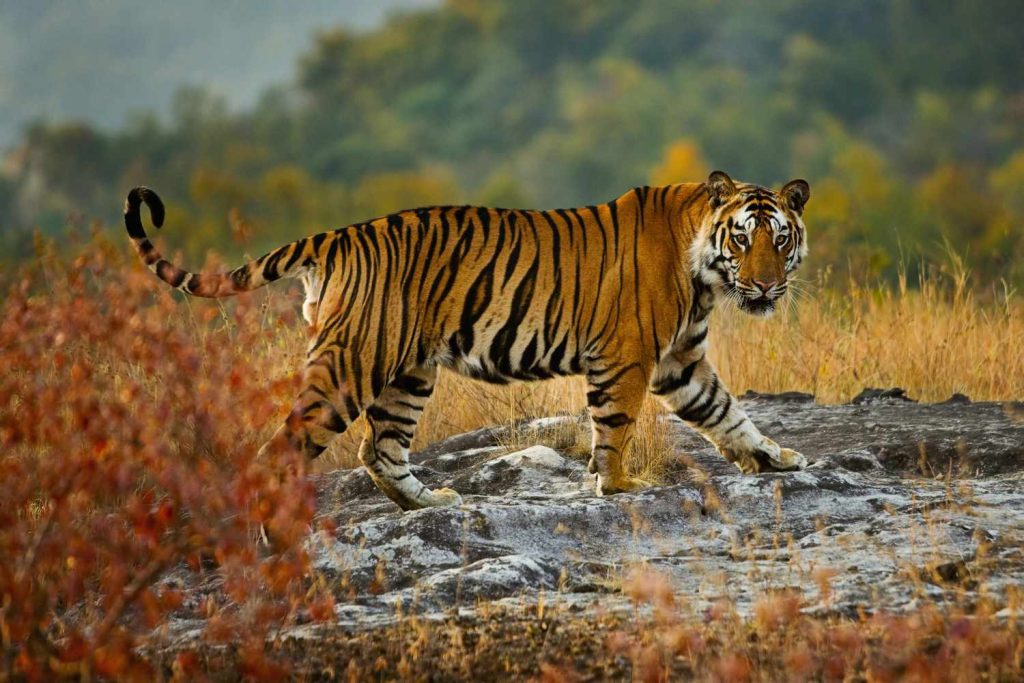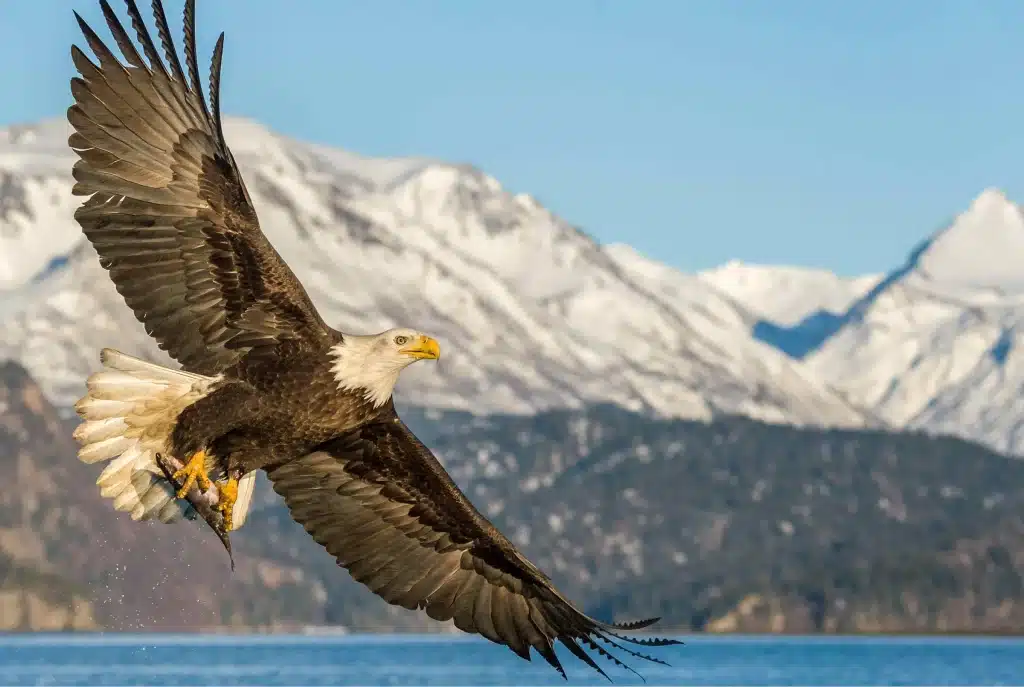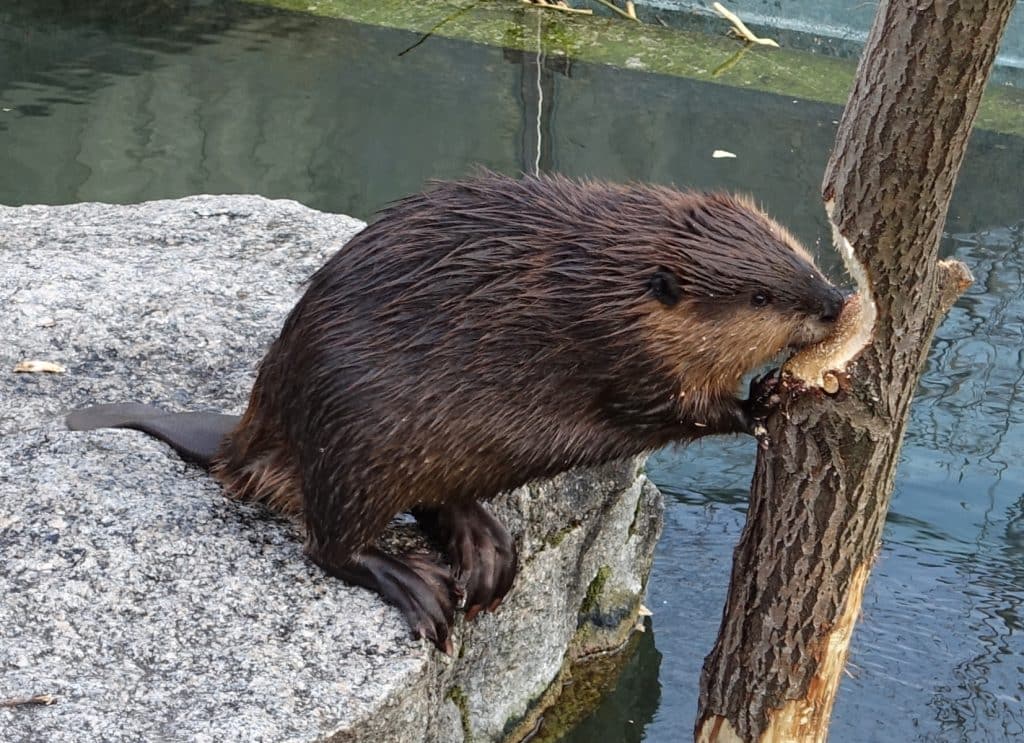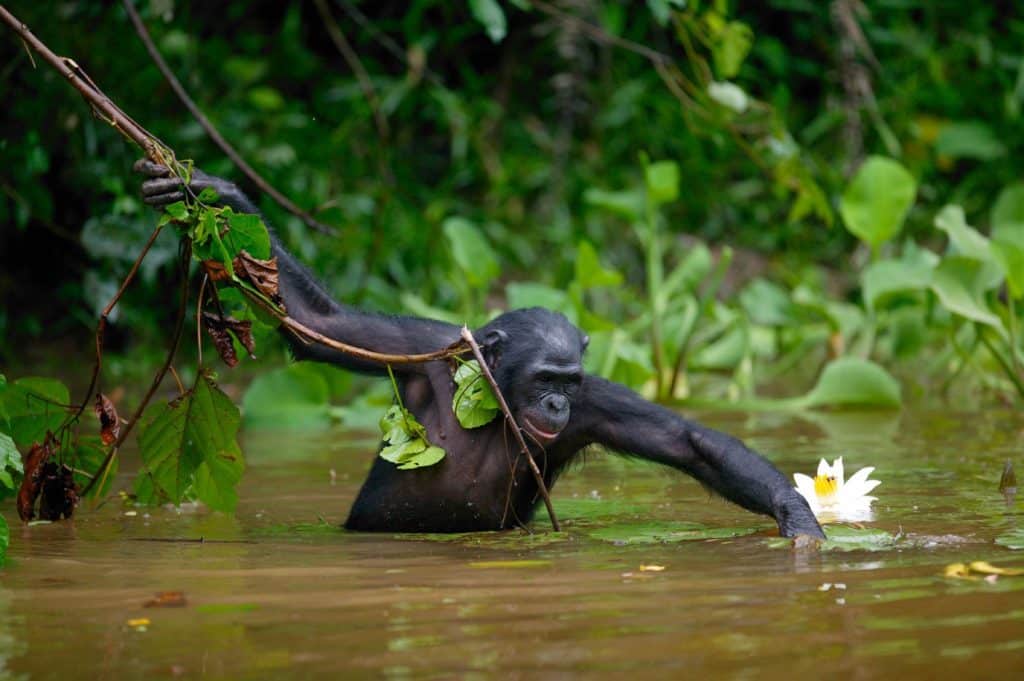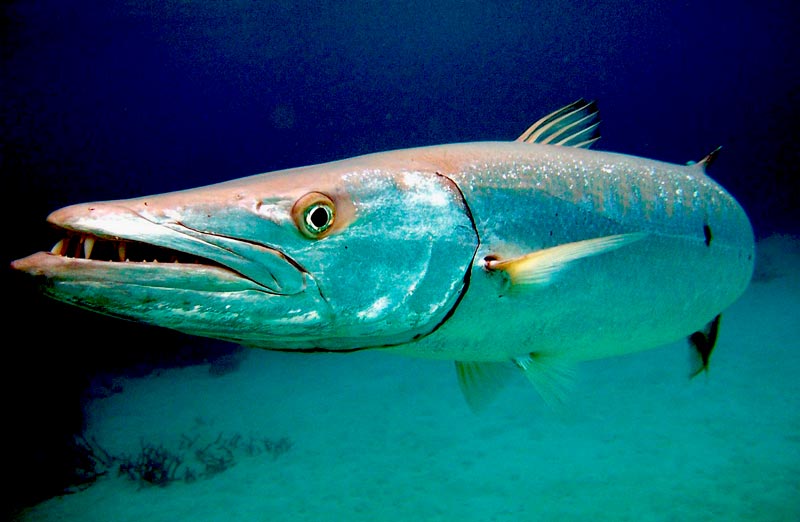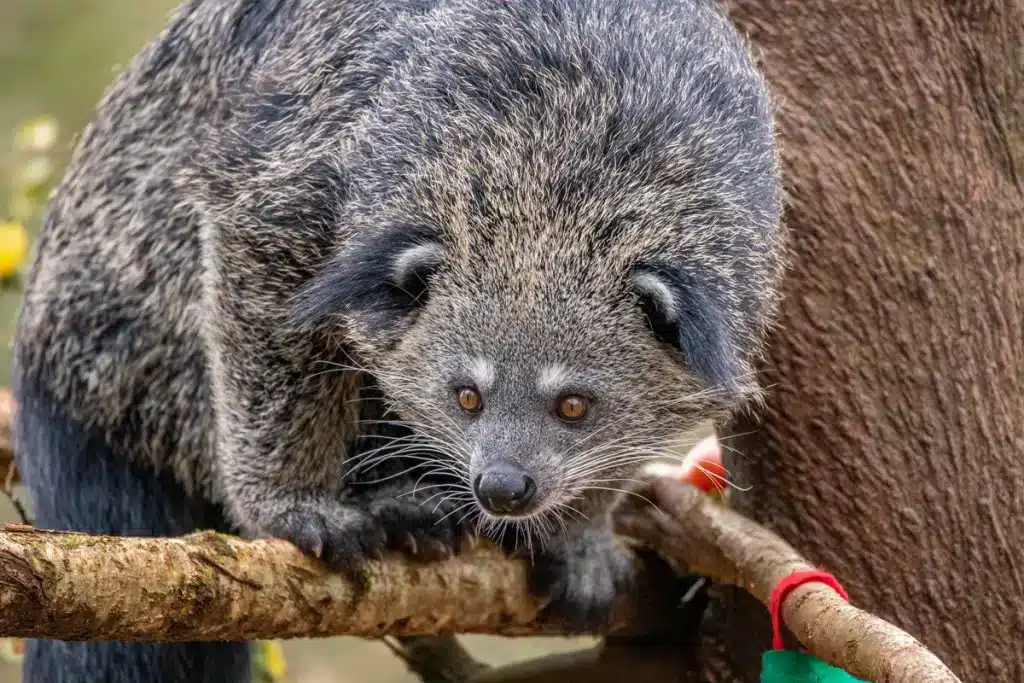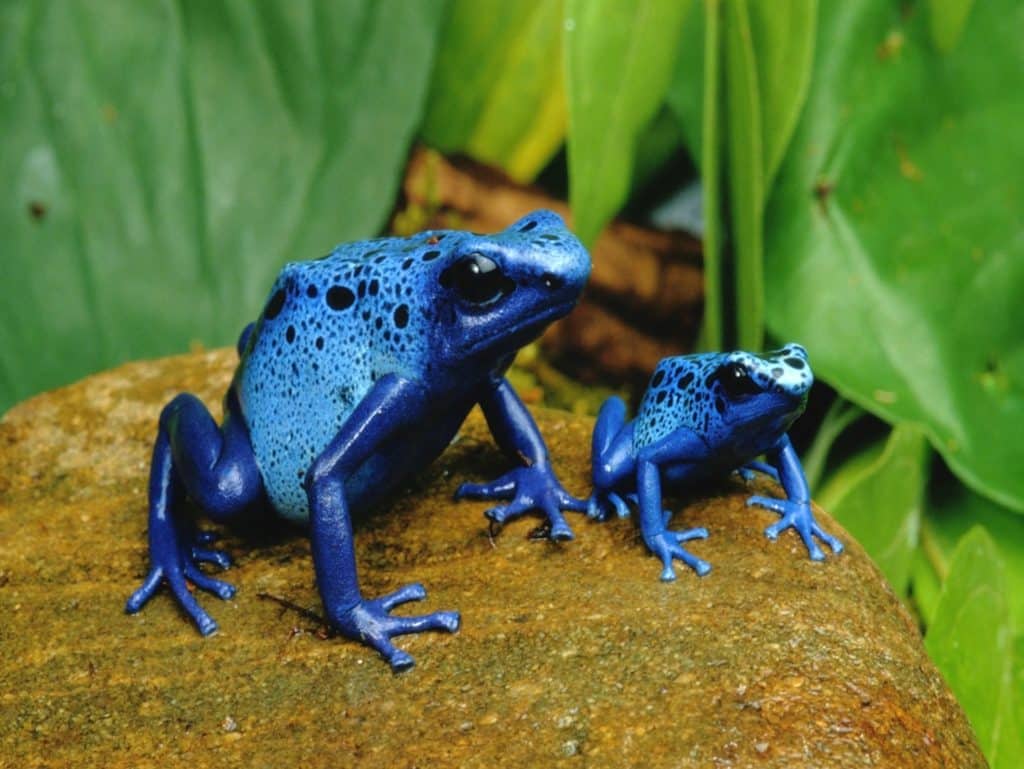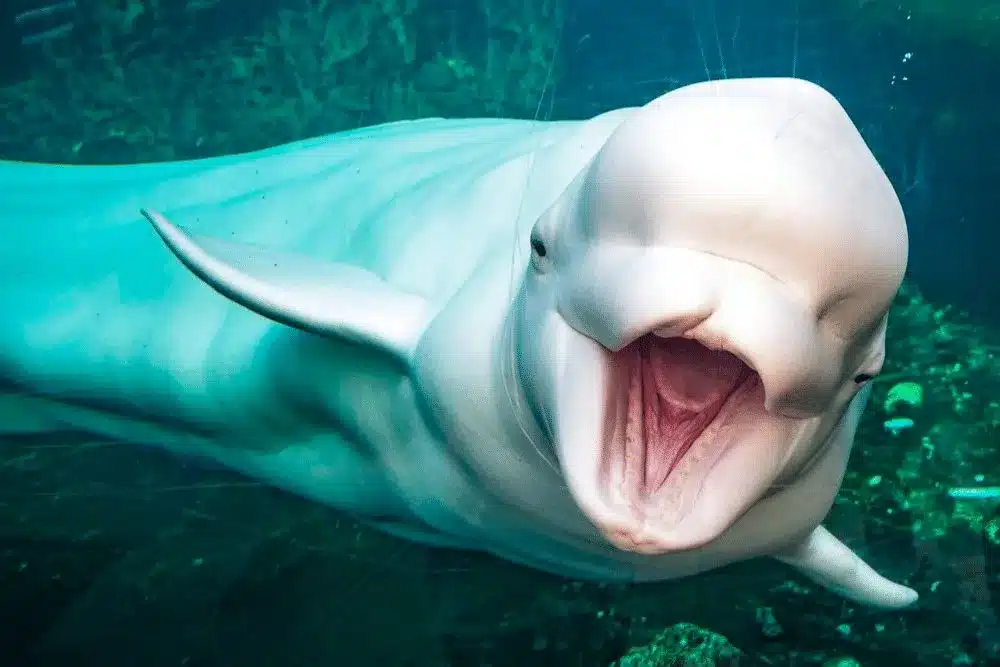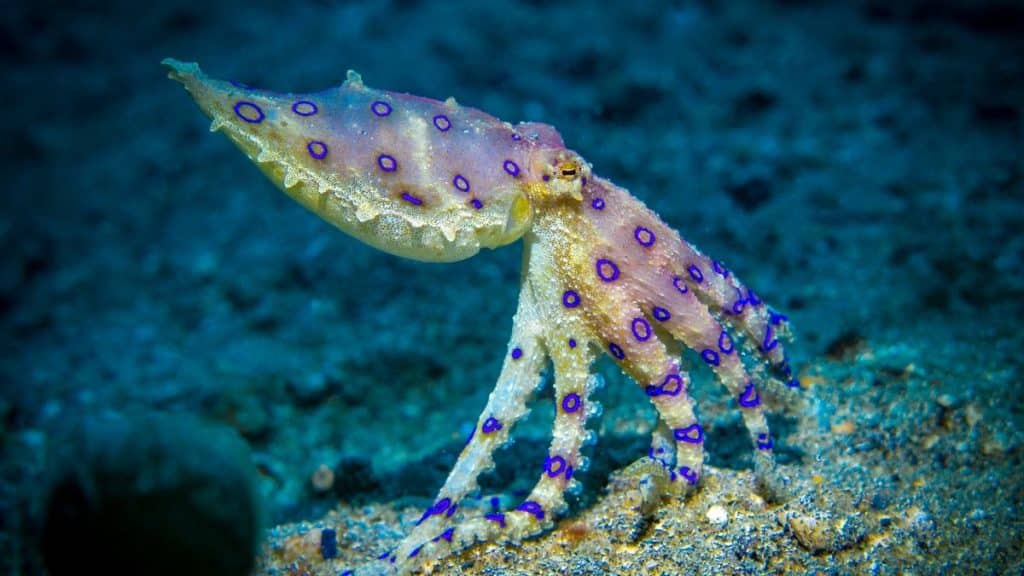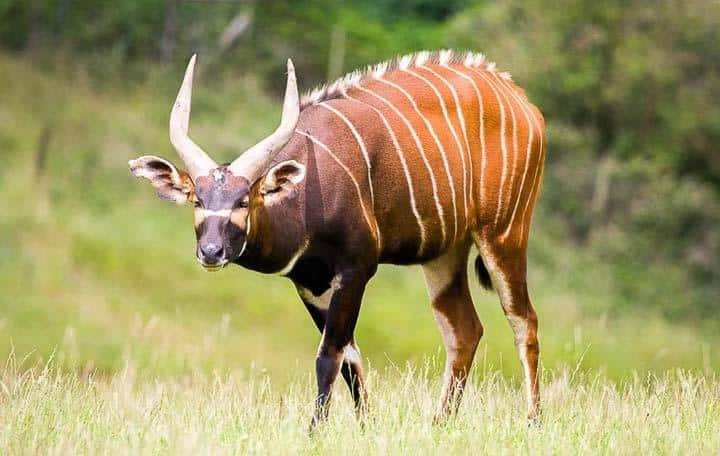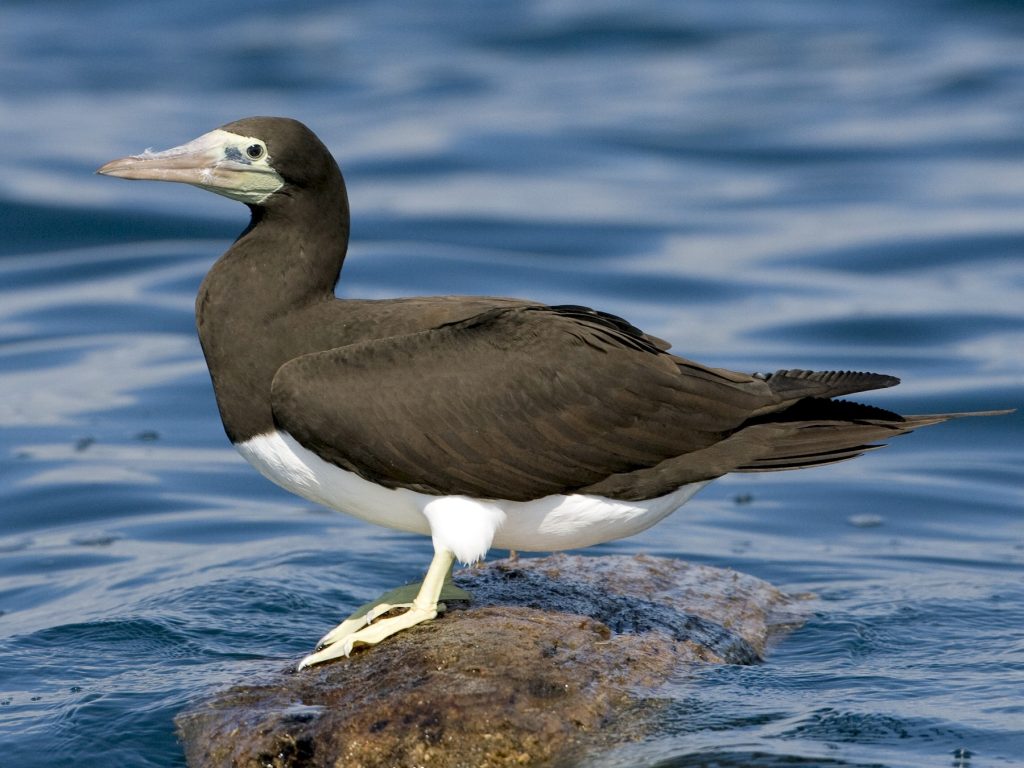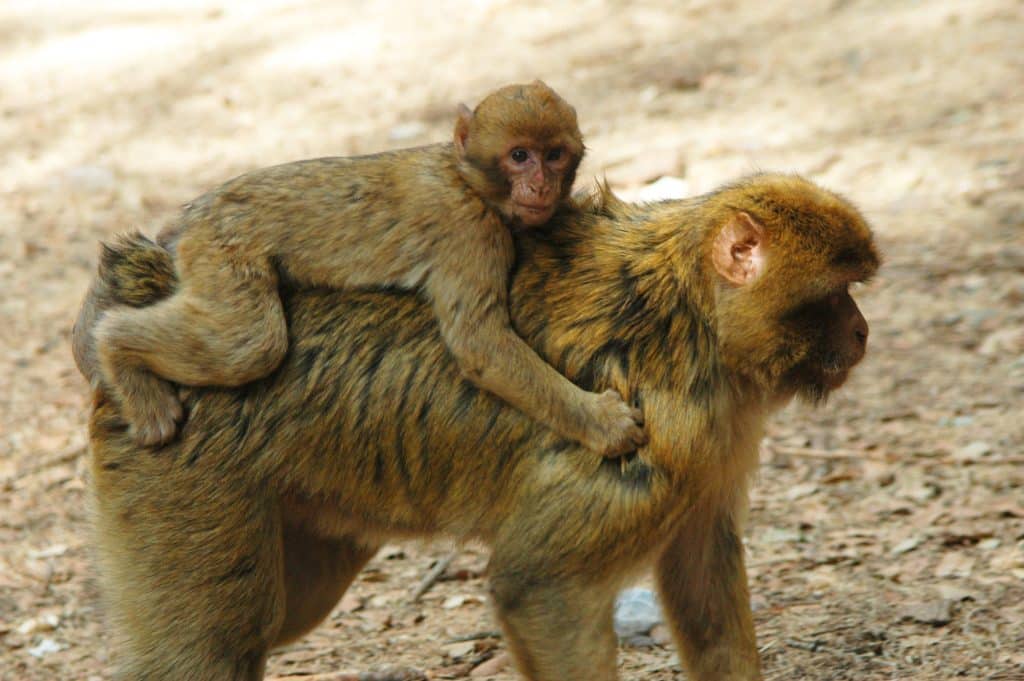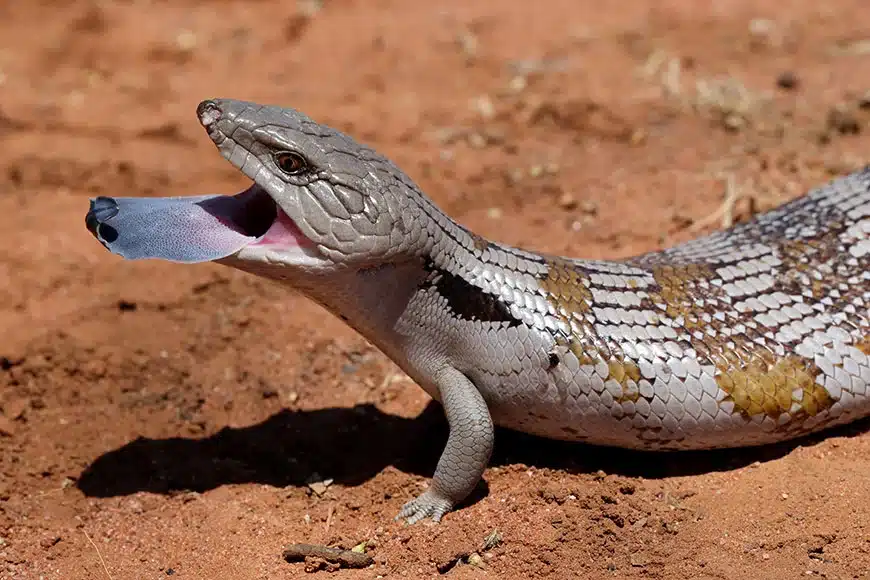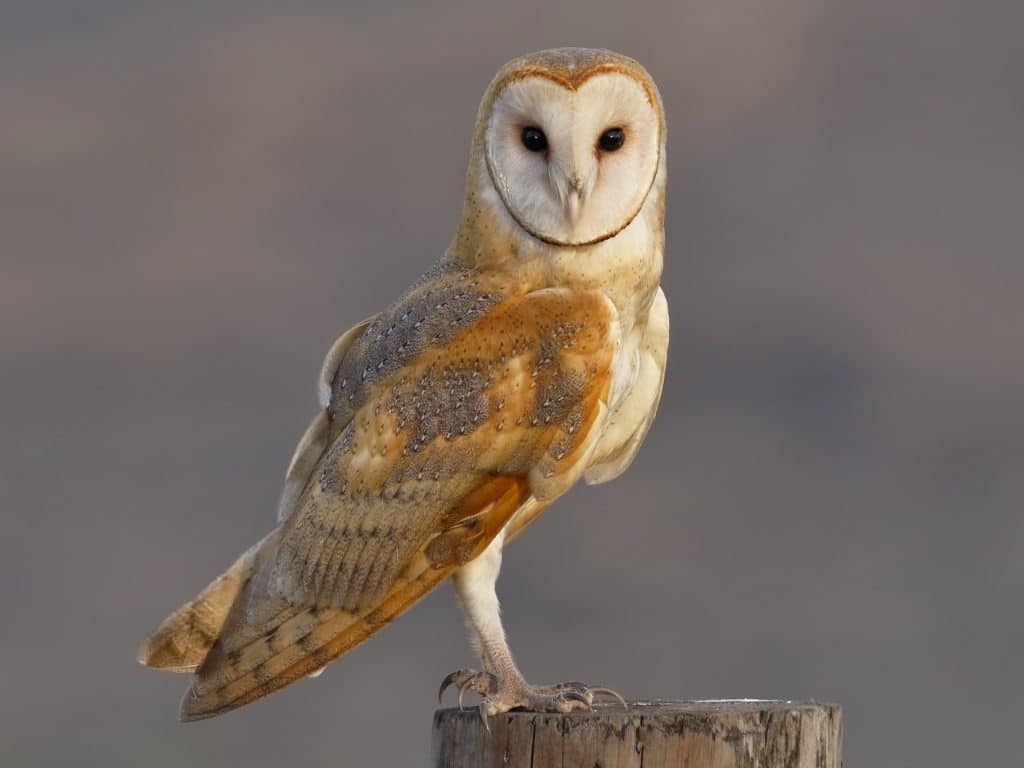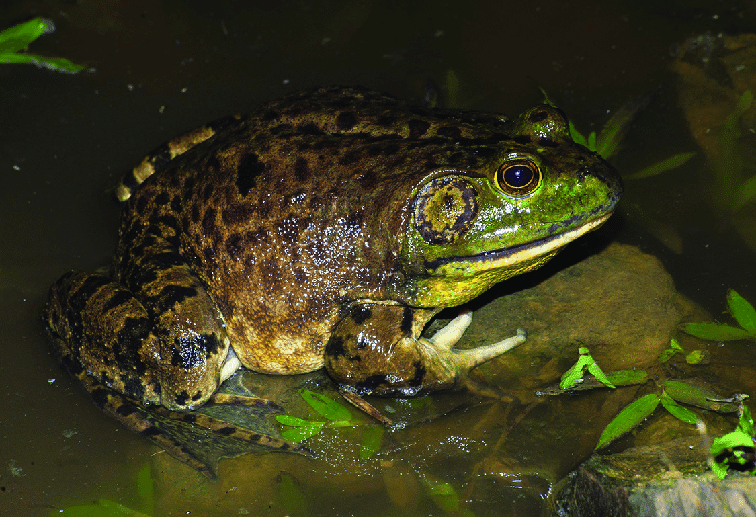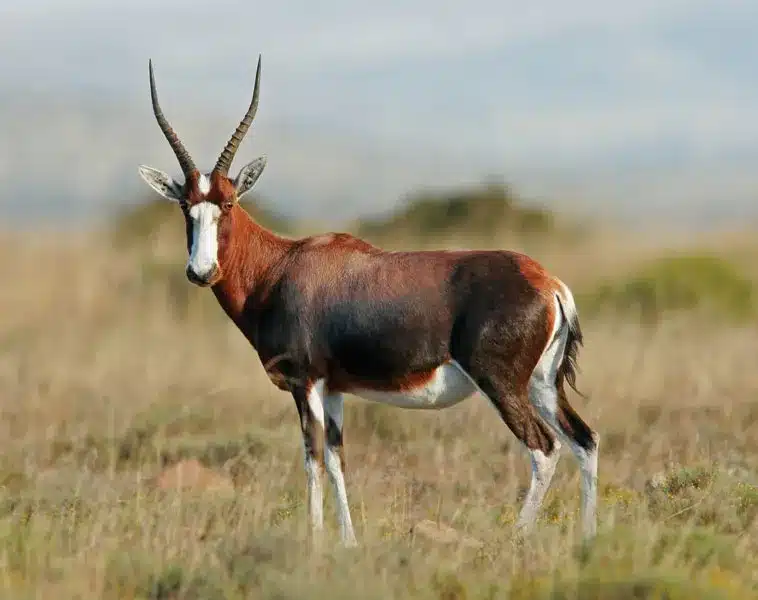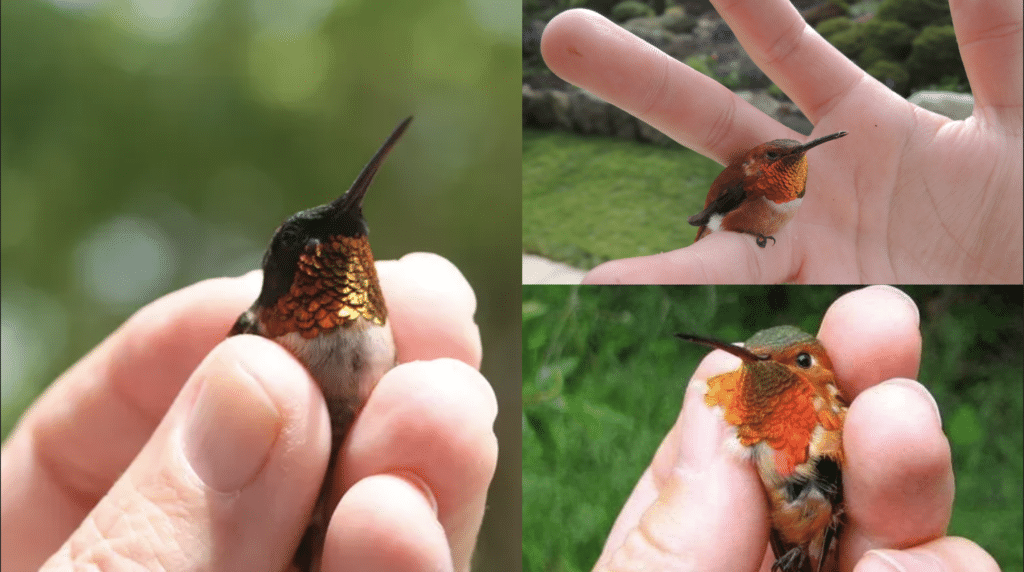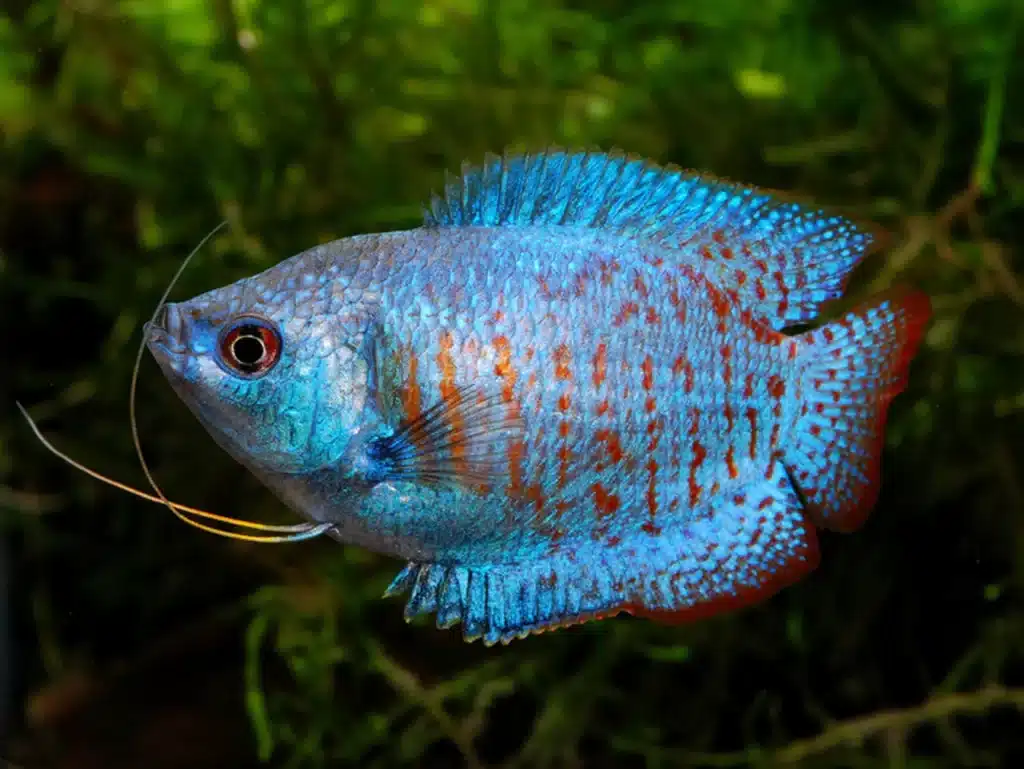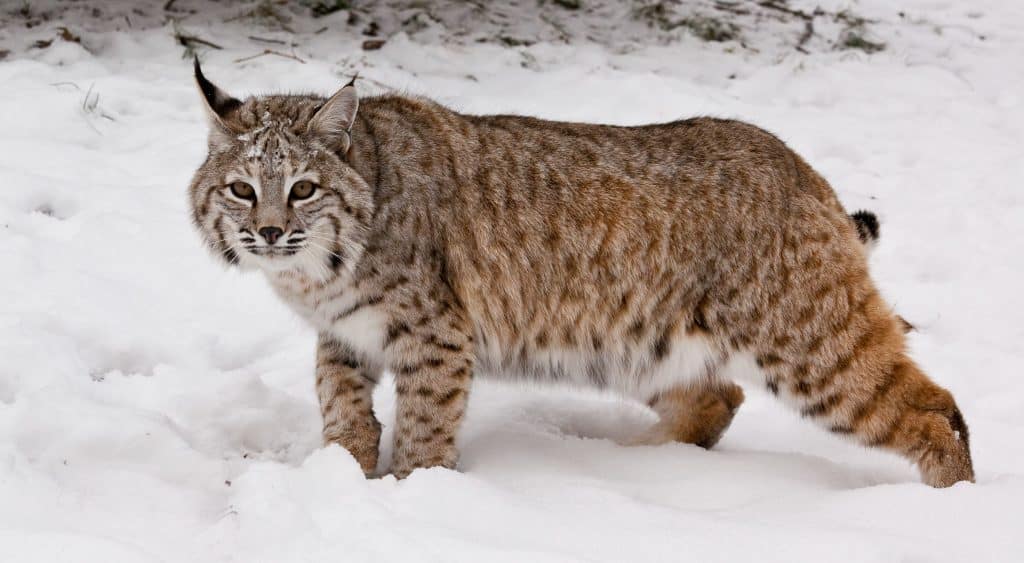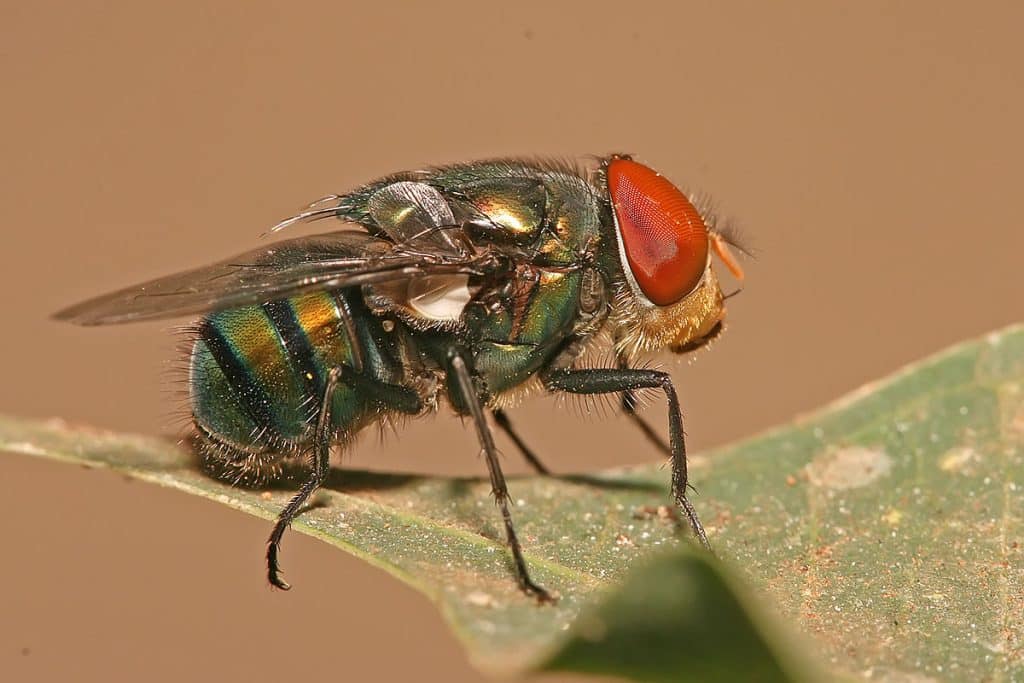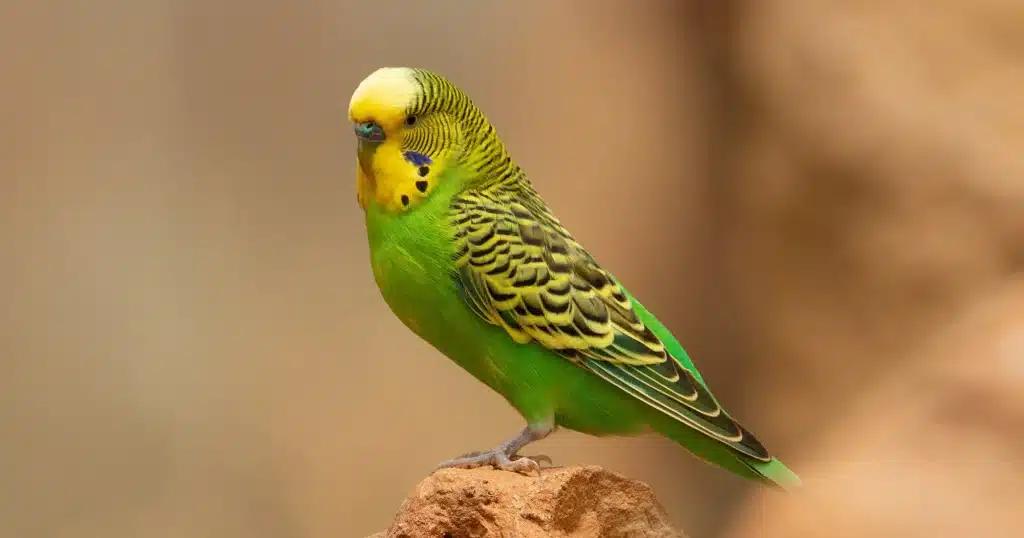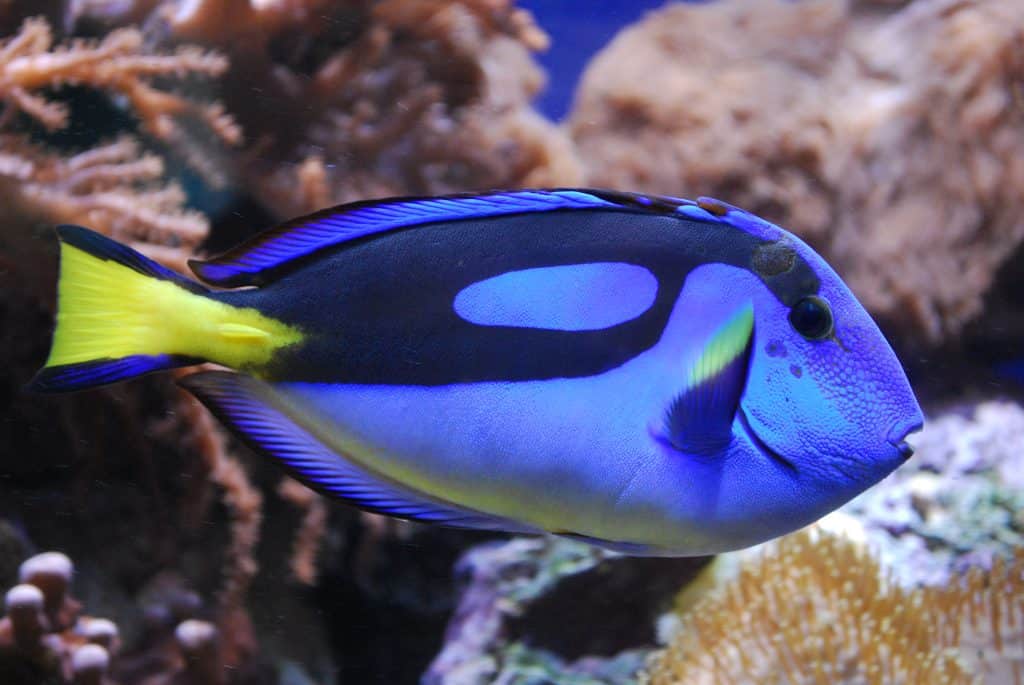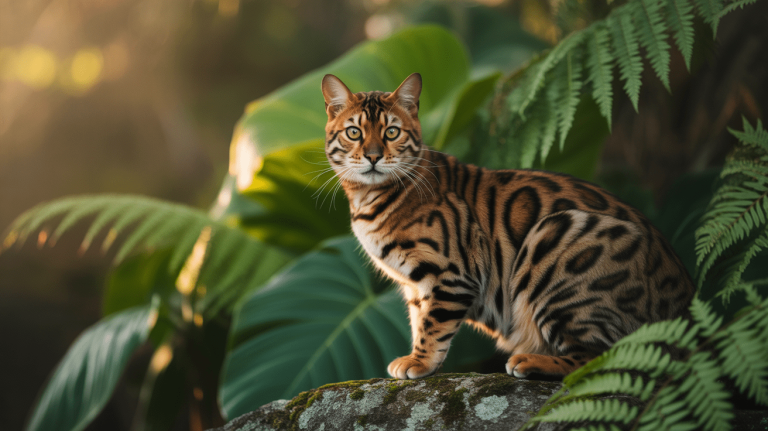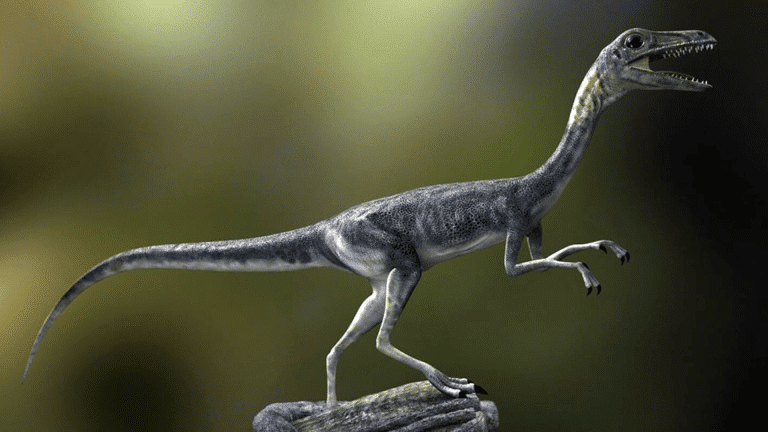Are you looking for animals that start with B? Your search ends here as we have curated a list of animals that start with B for you.
The diversity of organisms present on our planet is immense. Organisms are found in all spheres, be it land, air, or the deepest of the ocean.
Their unique adaptations aid them to survive in their surroundings, whether ambient or harsh. The diversity is not fully explored due to certain limitations.
But whatever is explored, it is also fascinating to witness. The following curation of animals that start with B will be a wholesome list for you.
You will see that even with a single alphabet, there are so many different types of animals present on this planet. Let’s get started!
List of Animals that Start with B
1. Bengal Tiger
Origin: India
Habitat: Forests and grasslands
Diet: Carnivorous, primarily deer and wild boar
Size: Males can weigh up to 500 pounds and measure about 10 feet in length.
Scientific Name: Panthera tigris tigris
Brief Description: Bengal Tigers are known for their distinctive orange coat with dark stripes. They are powerful predators and are considered an endangered species.
Interesting Facts:
- Bengal Tigers are strong swimmers and often enjoy being in the water.
- They are solitary animals and establish territories to avoid conflicts with other tigers.
- The Bengal Tiger is India’s national animal.
2. Bald Eagle
Origin: North America
Habitat: Near large bodies of open water, including lakes, rivers, and coastal habitats
Diet: Mainly fish, but also birds and small mammals
Size: Wingspan ranges from 6 to 7 feet
Scientific Name: Haliaeetus leucocephalus
Brief Description: The Bald Eagle is a large bird of prey with a distinctive white head and tail. It is a symbol of the United States and is known for its impressive aerial displays.
Interesting Facts:
- Bald Eagles mate for life and often use the same nest for years.
- They have incredible eyesight and can spot fish from high in the sky.
- The Bald Eagle was once endangered but has made a remarkable recovery.
3. Blue Whale
Origin: Oceans worldwide
Habitat: Open ocean
Diet: Filter feeders, primarily krill
Size: The largest animal on Earth, reaching lengths of up to 100 feet
Scientific Name: Balaenoptera musculus
Brief Description: Blue Whales are massive marine mammals with a blue-gray coloration and a heart that can be as large as a small car. They are gentle giants and are endangered.
Interesting Facts:
- Blue Whales communicate using low-frequency sounds that can travel long distances in the ocean.
- Despite their enormous size, they feed on some of the smallest organisms in the ocean—krill.
- Their tongue alone can weigh as much as an elephant.
4. Beaver
Origin: North America, Europe, and Asia
Habitat: Freshwater ecosystems, building dams and lodges
Diet: Herbivores, feeding on bark, leaves, and aquatic plants
Size: Adults typically weigh 30-60 pounds
Scientific Name: Castor canadensis (North American beaver)
Brief Description: Beavers are known for their large, flat tails and webbed hind feet. They are excellent builders, constructing dams to create ponds for protection and easier access to food.
Interesting Facts:
- Beavers are considered ecosystem engineers because their dam-building activities can significantly impact the environment.
- They have a special gland that produces a substance called castoreum, which marks their territory.
- Beavers are mainly nocturnal, being most active during the night.
5. Bonobo
Origin: Democratic Republic of the Congo
Habitat: Dense forests
Diet: Omnivores, with a diet consisting of fruit, leaves, insects, and occasionally small mammals
Size: Similar in size to the common chimpanzee, with a more slender build
Scientific Name: Pan paniscus
Brief Description: Bonobos are closely related to chimpanzees and share about 98% of their DNA. Compared to other great apes, they are known for their social behavior, intelligence, and peaceful nature.
Interesting Facts:
- Bonobos are often referred to as the “pygmy chimpanzees.”
- They resolve conflicts through social bonding and sexual activity, promoting a more harmonious group dynamic.
- Bonobos are considered endangered due to habitat loss and hunting.
6. Bactrian Camel
Origin: Central Asia
Habitat: Arid regions, deserts, and steppes
Diet: Herbivores, feeding on a variety of plants, including thorny vegetation
Size: Adult males weigh around 1,800 pounds
Scientific Name: Camelus bactrianus
Brief Description: Bactrian Camels are known for their distinctive two humps, which store fat for sustenance during long periods without water. They are well-adapted to harsh desert environments.
Interesting Facts:
- Bactrian Camels can drink up to 40 gallons of water in one go when they rehydrate.
- They are domesticated and have been used as pack animals for centuries.
- Bactrian Camels are critically endangered in the wild.
7. Barracuda
Origin: Global distribution in tropical and subtropical oceans
Habitat: Coastal areas, coral reefs, and open seas
Diet: Carnivores, feeding on fish and squid
Size: Varies by species, with some reaching lengths of up to 6 feet
Scientific Name: Sphyraena spp.
Brief Description: Barracudas are sleek, predatory fish with a torpedo-shaped body and sharp teeth. They are known for their speed and agility in the water.
Interesting Facts:
- Barracudas are opportunistic hunters and often use surprise and rapid bursts of speed to catch their prey.
- They are attracted to shiny objects and have been known to bite shiny fishing lures.
- Barracudas are popular among sport fishermen due to their challenging fight.
8. Binturong
Origin: Southeast Asia
Habitat: Forests, ranging from lowland to mountainous areas
Diet: Omnivores, consume fruits, leaves, and small mammals
Size: Typically weighs between 25 to 40 pounds
Scientific Name: Arctictis binturong
Brief Description: Binturongs, also known as bearcats, have a prehensile tail, shaggy fur, and a face that resembles a cat-bear combination. They are arboreal and spend much of their time in trees.
Interesting Facts:
- Binturongs emit a distinct musky odor, often compared to popcorn’s scent.
- They have a specialized ankle joint that allows them to rotate their hind feet backward, aiding in climbing and grasping branches.
- Binturongs are listed as vulnerable due to habitat loss.
9. Blobfish
Origin: Found off the coasts of Australia and Tasmania
Habitat: Deep-sea depths, around 2,000 to 4,000 feet below the surface
Diet: Carnivores, feeding on small invertebrates
Size: Varies, but typically around 12 inches in length
Scientific Name: Psychrolutes marcidus
Brief Description: Blobfish are deep-sea fish with a gelatinous, blob-like appearance. Their unique structure allows them to float just above the ocean floor.
Interesting Facts:
- The blobfish’s blobby appearance is a result of the extreme pressure difference between its deep-sea habitat and the surface.
- They are not as unattractive as they seem; their appearance changes when brought to the surface due to the pressure difference.
- Blobfish are considered a vulnerable species due to deep-sea trawling.
10. Blue Poison Dart Frog
Origin: Central and South America, primarily in rainforests
Habitat: Moist environments, often near water sources
Diet: Insectivores, feeding on small invertebrates
Size: Small, typically around 1 to 2 inches in length
Scientific Name: Dendrobates tinctorius azureus
Brief Description: Blue Poison Dart Frogs are known for their vibrant blue coloration, which serves as a warning to potential predators about their toxic skin secretions.
Interesting Facts:
- Indigenous people have used the toxic secretions of these frogs to poison the tips of blowdarts for hunting.
- In captivity, away from their natural diet, these frogs do not produce the toxic compounds found in their wild counterparts.
- The vibrant coloration of the Blue Poison Dart Frog is thought to be a form of aposematism, warning predators of their toxicity.
11. Black Rhinoceros
Habitat: Grasslands, savannas, and tropical bushlands
Diet: Herbivores, primarily feeding on shrubs and trees
Size: Weighs between 1,800 to 3,100 pounds
Scientific Name: Diceros bicornis
Brief Description: Black Rhinoceroses are large, thick-skinned mammals with two distinct horns on their snouts. They are known for their solitary nature and are critically endangered.
Interesting Facts:
- Despite their name, Black Rhinos can be gray, brown, or white.
- Their horns are made of keratin, the same protein found in human hair and nails.
- Black Rhinos are primarily nocturnal and have a relatively short temper.
12. Beluga Whale
Origin: Arctic and subarctic regions, including the Arctic Ocean and adjacent seas
Habitat: Coastal and deep offshore waters
Diet: Carnivores, feeding on fish, squid, and crustaceans
Size: Adults typically range from 13 to 20 feet in length
Scientific Name: Delphinapterus leucas
Brief Description: Beluga Whales are known for their distinctive white coloration and rounded foreheads. They are highly sociable and known as the “canaries of the sea” due to their vocalizations.
Interesting Facts:
- Belugas have a flexible neck, allowing them to turn their heads in all directions.
- They undergo a color change with age, starting gray or brown and gradually turning white as they mature.
- Beluga Whales are adapted to live in icy waters and can swim beneath sea ice.
13. Blue-ringed Octopus
Origin: Found in the Pacific and Indian Oceans, particularly around Australia
Habitat: Shallow coral reefs and tide pools
Diet: Carnivores, primarily preying on small crustaceans and fish
Size: Small, with a body length of about 5 to 8 inches
Scientific Name: Hapalochlaena spp.
Brief Description: Blue-ringed Octopuses are small but venomous octopuses known for their vibrant blue rings that appear as a warning when they feel threatened.
Interesting Facts:
- Their venom contains tetrodotoxin, a potent neurotoxin that can be deadly to predators and humans.
- Despite their small size, blue-ringed octopuses are considered one of the most venomous marine animals.
- They are nocturnal hunters, using their beaks to inject venom into their prey.
14. Bongo Antelope
Origin: Central Africa, including countries like Kenya and Sudan
Habitat: Dense forests and bamboo thickets
Diet: Herbivores, feeding on leaves, grasses, and fruits
Size: Large, with males weighing between 500 to 900 pounds
Scientific Name: Tragelaphus eurycerus
Brief Description: Bongos are large and colorful antelopes with distinctive spiral horns. They are known for their elusive behavior and are well-adapted to life in dense forests.
Interesting Facts:
- Bongos are often called the “ghosts of the forest” due to their secretive nature.
- Their unique spiral horns can reach lengths of up to 3 feet and are used for both defense and attracting mates.
- Bongos are considered near-threatened due to habitat loss and hunting.
15. Basking Shark
Origin: Global, found in temperate and cold waters
Habitat: Coastal waters and open oceans
Diet: Filter feeders, primarily consuming plankton
Size: One of the largest shark species, with adults reaching lengths of up to 40 feet
Scientific Name: Cetorhinus maximus
Brief Description: Basking Sharks are characterized by their enormous size and distinctive gill slits. Despite their intimidating appearance, they are filter feeders, sieving plankton from the water.
Interesting Facts:
- Basking Sharks are slow-moving and often seen near the water’s surface, “basking” in the sun.
- They have a unique feeding mechanism called “passive filter feeding,” where they swim with their mouths wide open, filtering food through their gill rakers.
- Basking Sharks are considered vulnerable due to threats such as fisheries bycatch.
16. Bilby
Origin: Australia
Habitat: Arid and semi-arid regions, including deserts and grasslands
Diet: Omnivores, feeding on a variety of plants, insects, and small animals
Size: Small marsupials, around 20 inches in length
Scientific Name: Macrotis lagotis
Brief Description: Bilbies are small, nocturnal marsupials with long ears and a distinctive, pointed snout. They are known for their burrowing behavior.
Interesting Facts:
- Bilbies are excellent burrowers and create complex tunnel systems for shelter.
- They have a keen sense of smell, which helps them locate food underground.
- Bilbies are considered endangered, primarily due to habitat loss and competition with introduced species.
17. Brown Booby
Origin: Found in tropical and subtropical regions worldwide
Habitat: Coastal areas, islands, and coral reefs
Diet: Fish and squid
Size: Medium to large seabirds, with wingspans ranging from 3 to 5 feet
Scientific Name: Sula leucogaster
Brief Description: Brown Boobies are seabirds known for their brown plumage and distinctive appearance. They are skilled divers and plunge into the water to catch their prey.
Interesting Facts:
- Brown Boobies are expert fliers and can cover long distances over the open ocean.
- They often nest in colonies on rocky cliffs or islands.
- Brown Boobies are known for their bold and fearless behavior.
18. Burrowing Owl
Origin: Americas, from Canada to South America
Habitat: Open areas, grasslands, and deserts
Diet: Carnivores, feed on insects, small mammals, and reptiles
Size: Small owls, around 9 to 10 inches in length
Scientific Name: Athene cunicularia
Brief Description: Burrowing Owls are characterized by their long legs and distinctive appearance. They often inhabit burrows dug by other animals.
Interesting Facts:
- Burrowing Owls are diurnal, meaning they are active during the day, unlike many other owl species.
- They use a variety of objects, such as dung or feathers, to decorate the entrance of their burrows.
- Burrowing Owls are skilled hunters and can catch prey on the ground or in mid-air.
19. Bettong
Habitat: Grasslands and open forests
Diet: Herbivores, feeding on grasses, seeds, and fungi
Size: Small marsupials, around 20 inches in length
Scientific Name: Bettongia spp.
Brief Description: Bettongs, also known as rat-kangaroos, are small marsupials with a pouch. They play a crucial role in seed dispersal and ecosystem health.
Interesting Facts:
- Bettongs have a well-developed sense of smell, helping them locate food and navigate their environment.
- They are important for ecosystem health as they play a role in seed germination and plant diversity.
- Several bettong species are considered endangered due to habitat loss and introduced predators.
20. Barbary Macaque
Origin: North Africa and Gibraltar
Habitat: Forests, mountains, and rocky areas
Diet: Omnivores, feeding on a variety of plants, insects, and small animals
Size: Medium-sized primates, with males weighing around 24 pounds
Scientific Name: Macaca sylvanus
Brief Description: Barbary Macaques are Old World monkeys known for their distinctive appearance and social behavior. They are the only wild monkey population in Europe.
Interesting Facts:
- Barbary Macaques have a complex social structure, with dominant males leading groups of females and their offspring.
- They are adapted to various habitats, from cedar forests to urban areas.
- Barbary Macaques are considered endangered due to habitat loss and the pet trade.
21. Blue-tongued Skink
Origin: Australia and parts of Indonesia
Habitat: Woodlands, grasslands, and heathlands
Diet: Omnivores, feeding on insects, fruits, and vegetation
Size: Medium-sized lizards, with a body length of about 12 to 24 inches
Scientific Name: Tiliqua spp.
Brief Description: Blue-tongued Skinks are characterized by their large, blue tongue and stout bodies. They are popular in the exotic pet trade.
Interesting Facts:
- Blue-tongued Skinks use their bright blue tongue as a defensive display to deter predators.
- They are ground-dwelling and are often found basking in the sun.
- Blue-tongued Skinks are known for their calm temperament.
22. Barn Owl
Origin: Global distribution, found on every continent except Antarctica
Habitat: Various, including grasslands, forests, and urban areas
Diet: Carnivores, primarily feeding on small mammals like mice and voles
Size: Medium-sized owls with a wingspan of about 2 to 3 feet
Scientific Name: Tyto alba
Brief Description: Barn Owls are known for their distinctive heart-shaped facial disks and silent flight. They are efficient nocturnal hunters.
Interesting Facts:
- Barn Owls have exceptional hearing, allowing them to locate prey in complete darkness.
- They are one of the most widely distributed owl species globally.
- Barn Owls have been associated with folklore and are often seen as symbols of wisdom.
23. Blowfish (Porcupinefish)
Origin: Found in tropical and subtropical oceans worldwide
Habitat: Coral reefs, rocky shores, and sandy bottoms
Diet: Omnivores, feeding on small fish, crustaceans, and algae
Size: Varies by species, with some reaching lengths of up to 2 feet
Scientific Name: Diodon hystrix – Spotfin Porcupinefish
Brief Description: Blowfish, also known as Porcupinefish, are characterized by their ability to inflate their bodies into a spiky ball as a defense mechanism.
Interesting Facts:
- Inflating their bodies helps them deter predators by making it difficult to swallow or bite.
- Blowfish have powerful beaks that they use to crush the shells of their prey.
- Some species of Blowfish are highly toxic and can be deadly if consumed.
24. Blue Jay
Origin: North America
Habitat: Forests, parks, and suburban areas
Diet: Omnivores, feeding on seeds, nuts, insects, and small vertebrates
Size: Medium-sized birds with a length of about 9 to 12 inches
Scientific Name: Cyanocitta cristata
Brief Description: Blue Jays are colorful birds known for their vibrant blue plumage, distinctive crest, and loud vocalizations.
Interesting Facts:
- Blue Jays are excellent mimics and can imitate the calls of other bird species.
- They are known for their intelligence and problem-solving abilities.
- Blue Jays play a role in seed dispersal by caching and forgetting about seeds, allowing plants to propagate.
25. Boxer Crab
Origin: Indo-Pacific region
Habitat: Coral reefs and shallow coastal waters
Diet: Omnivores, feeding on small invertebrates and detritus
Size: Small crabs with a carapace width of about 0.5 to 1 inch
Scientific Name: Lybia tessellata
Brief Description: Boxer Crabs are small crabs known for their unique behavior of carrying sea anemones in their claws for protection.
Interesting Facts:
- Boxer Crabs use the stinging cells of the sea anemones for defense against predators.
- They have a distinctive “boxing” behavior, where they use their claws to fend off threats.
- Boxer Crabs are popular in the aquarium trade due to their fascinating symbiotic relationship with sea anemones.
26. Bullfrog
Origin: North America, introduced to other parts of the world
Habitat: Ponds, lakes, and slow-moving streams
Diet: Carnivores, feeding on insects, small fish, and other amphibians
Size: Large frogs, with adult males reaching lengths of 3 to 6 inches
Scientific Name: Lithobates catesbeianus
Brief Description: Bullfrogs are large, powerful frogs known for their deep croaking calls and powerful hind legs.
Interesting Facts:
- Bullfrogs have a voracious appetite and are opportunistic predators.
- They are capable of leaping great distances, aided by their strong hind legs.
- Bullfrogs are considered invasive in some regions where they have been introduced.
27. Blesbok
Origin: South Africa
Habitat: Open grasslands and savannas
Diet: Herbivores, primarily feeding on grasses
Size: Medium-sized antelopes, with males weighing around 130-200 pounds
Scientific Name: Damaliscus pygargus phillipsi
Brief Description: Blesboks are antelopes known for their distinctive white faces and bodies. They are social animals that often form large herds.
Interesting Facts:
- The word “bles” in Afrikaans means “blaze,” referring to the white blaze on their faces.
- Blesboks are agile runners and can reach high speeds to escape predators.
- They are considered a conservation success story, recovering from near-extinction in the 19th century.
28. Bee Hummingbird
Origin: Cuba and the Isla de la Juventud
Habitat: Forests, gardens, and meadows
Diet: Herbivores, feeding on nectar from flowers
Size: Smallest bird species, with males measuring about 2 inches in length
Scientific Name: Mellisuga helenae
Brief Description: Bee Hummingbirds are tiny, iridescent birds known for their rapid wing beats and exceptional agility in flight.
Interesting Facts:
- Males have vibrant, iridescent plumage that reflects a range of colors in the sunlight.
- Bee Hummingbirds are expert hoverers and can fly backward and upside down.
- They have the highest metabolism of any bird species, requiring constant feeding to sustain their energy levels.
29. Blue Gourami
Habitat: Slow-moving freshwater environments, such as ponds and swamps
Diet: Omnivores, feeding on plants, insects, and small invertebrates
Size: Medium-sized freshwater fish, with a length of about 4 to 6 inches
Scientific Name: Trichopodus spp.
Brief Description: Blue Gouramis are popular aquarium fish known for their striking blue coloration and labyrinth organ, allowing them to breathe air.
Interesting Facts:
- They are labyrinth fish, which means they can breathe air at the water’s surface.
- Blue Gouramis are known for their distinctive courtship rituals and bubble nest building.
- In the wild, they inhabit slow-moving waters with abundant vegetation.
30. Bobcat
Origin: North America
Habitat: Various, including forests, deserts, and mountainous regions
Diet: Carnivores, feeding on small mammals, birds, and insects
Size: Medium-sized wildcats, with males weighing around 20 to 30 pounds
Scientific Name: Lynx rufus
Brief Description: Bobcats are small wildcats characterized by their tufted ears, spotted coats, and short tails.
Interesting Facts:
- Bobcats are adaptable and can thrive in a range of environments, from swamps to urban areas.
- They are skilled hunters and are known for their patience and stealth when stalking prey.
- Bobcats are solitary animals and are primarily nocturnal.
31. Blowfly
Origin: Worldwide
Habitat: Varied, often found in decomposing matter and dung
Diet: Detritivores, feeding on decaying organic material
Size: Small to medium-sized flies
Scientific Name: Various species (e.g., Calliphoridae family)
Brief Description: Blowflies are common insects known for their metallic coloration and play an important role in decomposing organic matter.
Interesting Facts:
- Blowflies are often used in forensic entomology to help determine the time of death in criminal investigations.
- They have specialized mouthparts for sponging up liquids, which allows them to feed on a variety of food sources.
- Some blowfly species are important pollinators.
32. Budgerigar
Origin: Australia
Habitat: Grasslands, open woodlands, and urban areas
Diet: Herbivores, feeding on seeds, fruits, and vegetation
Size: Small parakeets, with a length of about 7 inches
Scientific Name: Melopsittacus undulatus
Brief Description: Budgerigars, commonly known as budgies, are small and colorful parakeets often kept as popular pets.
Interesting Facts:
- Budgies are highly social and are known for their ability to mimic human speech.
- They have a unique courtship behavior that involves bobbing their heads and singing.
- Budgies are among the most popular pet birds globally.
33. Blue Iguana
Origin: Grand Cayman, Cayman Islands
Habitat: Dry forests and rocky areas
Diet: Herbivores, feeding on leaves, flowers, and fruits
Size: Large lizards, with lengths ranging from 5 to 7 feet
Scientific Name: Cyclura lewisi
Brief Description: Blue Iguanas are large, terrestrial iguanas known for their striking blue coloration.
Interesting Facts:
- They are critically endangered, with conservation efforts aimed at protecting their remaining populations.
- Blue Iguanas are important for ecosystem health as seed dispersers and help maintain the balance of plant populations.
- The blue coloration intensifies during the breeding season, making them even more visually striking.
34. Bearded Dragon
Origin: Australia
Habitat: Arid regions, deserts, and woodlands
Diet: Omnivores, feeding on insects, vegetation, and small mammals
Size: Medium-sized lizards, with lengths ranging from 12 to 24 inches
Scientific Name: Pogona spp.
Brief Description: Bearded Dragons are popular reptile pets known for their distinctive appearance, including a “beard” of spiky scales under their throats.
Interesting Facts:
- They are known for their calm demeanor and are often considered good pets for reptile enthusiasts.
- Bearded Dragons are capable of changing their skin color to regulate body temperature.
- These lizards are equipped with a third eye, called the parietal eye, on top of their heads, which detects light and shadows.
35. Blue Tang
Origin: Indo-Pacific region, including the Great Barrier Reef
Habitat: Coral reefs and shallow coastal waters
Diet: Herbivores, feeding on algae and small invertebrates
Size: Small to medium-sized reef fish, with a length of about 12 inches
Scientific Name: Paracanthurus hepatus
Brief Description: Blue Tangs are vibrant surgeonfish known for their bright blue coloration and distinctive tail spine.
Interesting Facts:
- They are popular in the aquarium trade but require proper care and space to thrive.
- Blue Tangs have a sharp spine on their tail, which can cause injuries and is used for defense.
- The character “Dory” in the animated movie “Finding Nemo” is a Blue Tang.
Summing It Up
The list mentioned above of animals that start with B unfolded the vast diversity in living organisms.
From the vast skies to the depths of the oceans and the variety of landscapes in between, the diversity is inexplicable.
We saw terrestrial animals such as the Bengal Tiger, the Bearded Dragon, the Bobcat, etc. There were marine organisms, such as the Blue Tang, the Boxer Crab, and many more.
We have listed the most intriguing ones. However, the exploration of animals that start with B does not end with the list above!

